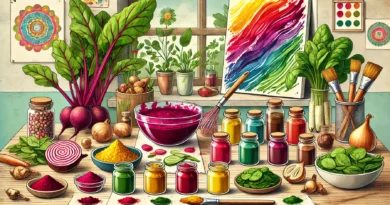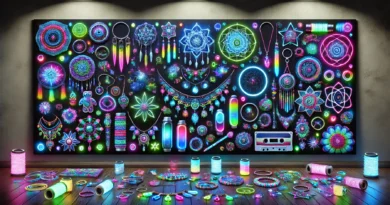Embracing Imperfection: Wabi-Sabi in Handicrafts
We live in an era obsessed with perfection. Products with millimetrically symmetrical lines, flawless surfaces, industrial standards. But for those who work with their hands and soul, this pursuit can feel empty. The Wabi-Sabi philosophy emerges as a powerful counterpoint, offering a new (or ancient) way of seeing the world: the beauty of the imperfect, the incomplete, and the transient.
Wabi-Sabi is a Japanese aesthetic deeply connected to nature, time, and simplicity. Instead of hiding cracks or disguising asymmetries, it values them. In a world where “handmade” is often confused with “poorly made,” understanding this philosophy is an invitation to see handicrafts through a different lens: more human, more real.
It’s not about justifying mistakes or lack of care. Embracing imperfection is about recognizing the uniqueness of each piece, the touch of time, the gesture of the maker. The value lies exactly in that: in authenticity. A vase with a slight bend at the rim, an embroidery with an offbeat stitch, a ceramic piece with a fingerprint: all of these can be part of a story, not a defect.
The origin and essence of Wabi-Sabi
To understand Wabi-Sabi, one must return to the Japanese Zen temples, to the tea ceremony, and the rejection of ostentation. “Wabi” refers to rustic simplicity, to voluntary sobriety, while “Sabi” speaks of the passage of time, the beauty that arises with age and wear.
This philosophy doesn’t have fixed rules or manuals, but rather a sensibility. In the context of handicraft, this means accepting that each object is unique. Imperfection is not a flaw to be corrected, but a quality to be perceived.
How to apply Wabi-Sabi in handicrafts
Adopting Wabi-Sabi in handicrafts means changing the relationship with the creative process. Instead of trying to replicate something identical to a model, the artisan begins to listen to the material, respect its limitations, and respond with authenticity.
For example, in ceramics, a crack can be highlighted using the Japanese technique of kintsugi (repair with gold), which emphasizes the imperfection instead of hiding it. In embroidery, different stitches can create a visual narrative. In woodworking, knots, grains, and textures are celebrated.
More than a technique, it’s an attitude. Allowing yourself to make mistakes, observing randomness, improvising. And above all, accepting that the final piece is more an expression of the moment than an attempt at absolute control.
Step-by-step to practice Wabi-Sabi in your handmade work
- Choose a natural material: clay, wood, raw fabric, recycled paper. Materials with “life” enhance the spirit of Wabi-Sabi.
- Start with intention, but without rigidity: have an idea of what you want to create, but be willing to change along the way.
- Observe the process: pay attention to the marks that appear, to the mistakes that can become aesthetic choices.
- Finish with sensitivity: don’t try to hide imperfections. Instead, see how they contribute to the overall beauty.
This path is also therapeutic. It shifts the focus from the result to the present moment, the contact with the material and with your own creativity.
The impact of Wabi-Sabi on the appreciation of handicrafts
In a market saturated with perfect and impersonal products, offering something with identity becomes a differentiator. Pieces created under the philosophy of Wabi-Sabi in handicrafts have soul. They speak to the consumer on a deeper level, evoke empathy, create connection.
For the seller, it’s also liberating. It lifts the burden of trying to meet an unreachable standard and makes room for true expression. A client who understands Wabi-Sabi knows they are taking home something unique, with story and intention.
Conclusion: imperfection as identity
Embracing imperfection is more than an aesthetic choice. It’s a form of creative resistance. In a world that constantly demands productivity and perfection, taking time to create something with your own hands, accepting flaws as part of the journey, is an act of courage.
Wabi-Sabi in handicrafts is a reminder that beauty lies in unpretentious details, in mistakes that become style, in the marks of time that tell stories. And maybe, by learning to value this in the pieces we create, we’ll also learn to see ourselves with more kindness.



